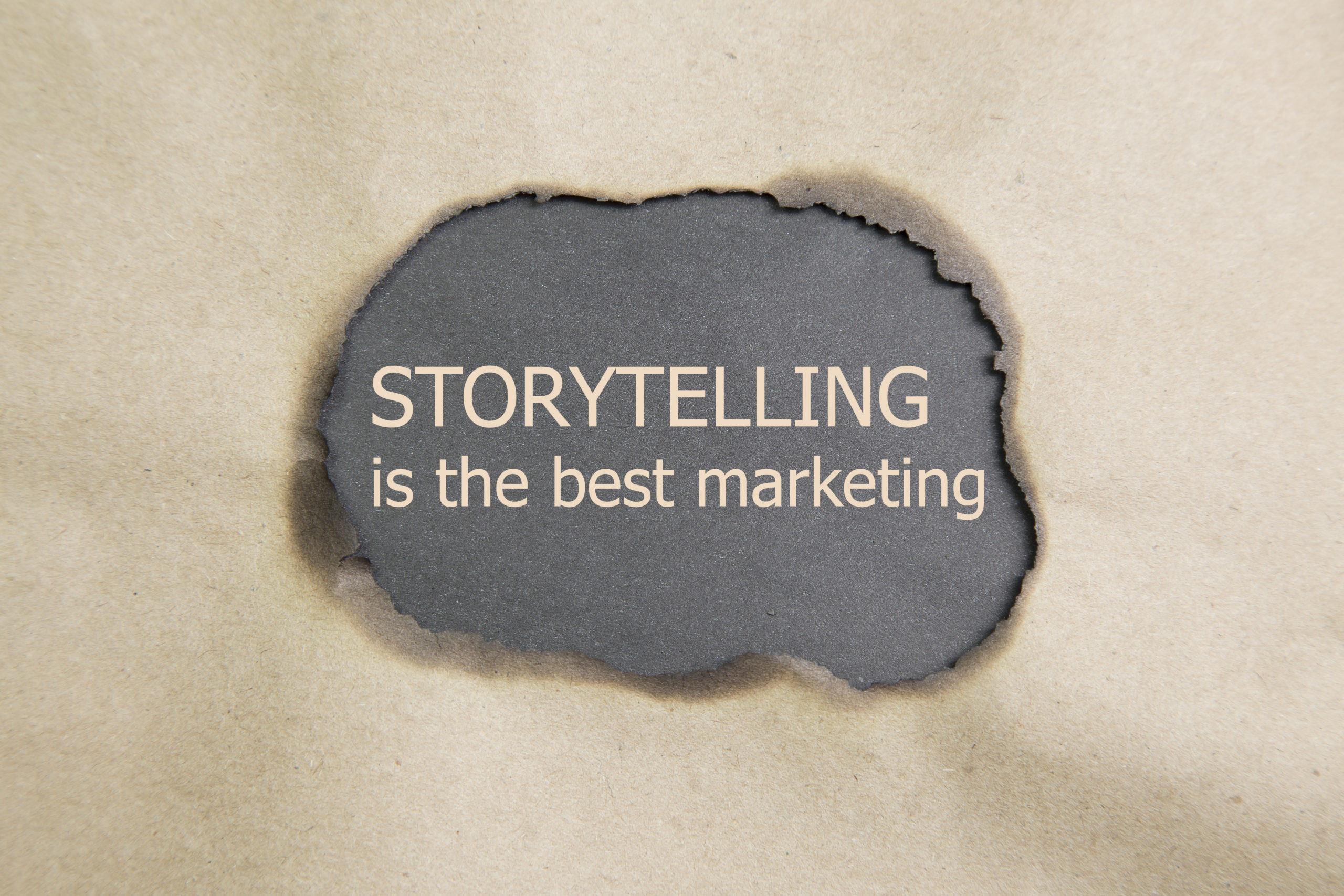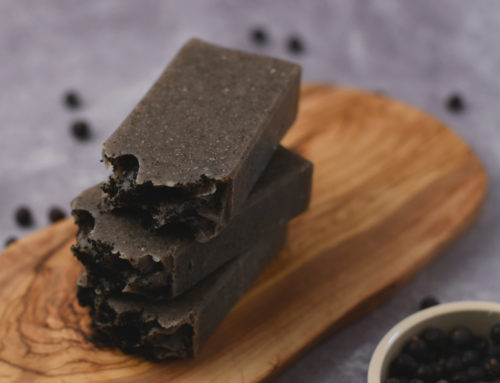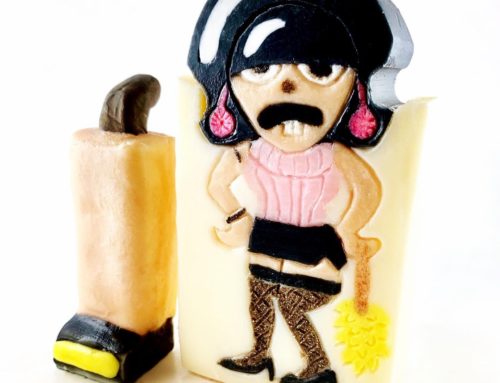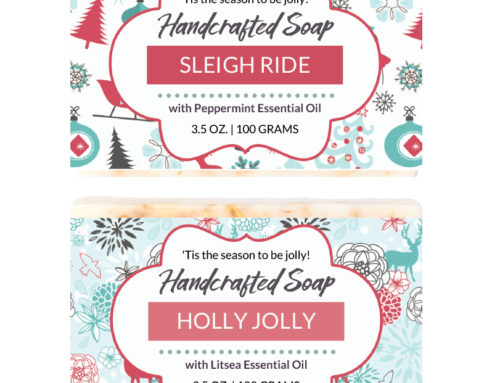(This is an excerpt from our comprehensive online business and marketing eCourse, Soap. Brand. Launch., included in our Business Membership! To get more lessons like this, sign up!)

Our brains value stories more than just about anything else. Think about the expanse that storytelling has on your life. Part of your identity, how you see yourself in the world, might have come from stories of ancestors you never met. The stories we tell ourselves influence how and why we wake up in the morning at the time we do. Stories tell us why we eat what we eat. Stories tell us what it means to be a good person or a bad one. Literally every aspect of the human condition is built upon stories, whether factual or fanciful.
And if you can’t properly convey a story to your customers, your products are not going to have enough appeal to warrant the success you seek. Your company story conveys the history, purpose, and values of your business in a narrative that resonates with consumers and makes them feel emotionally connected.
Foundationally, you should know who your company is and what it is going/willing to stand for. In Module 01 / Lesson 03, we looked at one of Ben & Jerry’s company values:
“We seek and support nonviolent ways to achieve peace and justice. We believe government resources are more productively used in meeting human needs than in building and maintaining weapons systems.”
As we discussed, this is a clear line in the sand. This statement can easily be viewed as divisive. In fact, it is divisive. There are countless people in this country who would vehemently oppose this stance. But Ben & Jerry’s knows who they are, and they aren’t afraid of their identity. This value that they conceptualized is an important part of their story.
For over a year, the news couldn’t stop talking about Colin Kaepernick, the NFL player turned activist who chose to kneel during the national anthem as a peaceful protest against police brutality towards people of color.
“Believe in something. Even if it means sacrificing everything.”
In a bold move, Nike took Kaepernick’s position and brought his message (see above quote) into their marketing, showcasing a line-in-the-sand advertisement that even aired during the Superbowl, the most watched event in America. Talk about divisive!
But Nike’s advertisement campaign based on Kaepernick’s position is part of their story. Nike aims to break the mold and not concern themselves with nonpartisanship. As an organization, they felt their voice needed to be heard and acted boldly in the wake of violent backlash. And guess what? The campaign paid off handsomely, earning them $6 billion, even after the ad sparked a boycott from opposition.
I’m not suggesting that you go out of your way to be confrontational or divisive. I’m giving you these examples to showcase what it means to be proud of your company for the values and tenets it lives by. Remember, you gotta live by a code. So, what is your code?
In all aspects of life, the most serene, confident, and happiest people are the ones who know who they are. They are comfortable in their own skin and don’t sway from their core belief system. Their inner “story” is paramount to the ideals they live by. Your company can do the same. Know yourself. The examples above are powerful statements and values that serve as subtext for the evolving stories that these companies are telling.
Know Your Genius
Yes, you are a genius. We all have genius in us, but only the wildly imaginative ones can retrieve it from within. Your genius is not your IQ. Your genius is actually what is unique and weird about you!
REI®, the world-famous outdoor clothing and gear brand, used their genius to build paramount trust and loyalty by closing their doors on the busiest shopping day of the year. Think about that.
Their slogan and corresponding social media hashtag, #optoutside, exemplified their genius and it became a remarkable chapter in their story. Closing their doors on Black Friday, the day after Thanksgiving, and telling their most loyal patrons to go explore the great outdoors instead of shopping proved to their customers that they aren’t in business solely for the money. They are in business to also make a cultural declaration about life and what is really important. What a story!
How can you narrow your genius? What wildly imaginative acclaim can you muster by simply showcasing what it is you already are deep within you? What rules do you feel like breaking? What social norms are getting in the way of love or laughter or adventure or happiness or esteem? Your answers to these questions are part of the story you are to tell.
Close your eyes and imagine that people all over the world are talking about your company. Feel the admiration from the millions of people excited about what your company is doing. Your social media feeds are blowing up with likes, hearts, and exalted commentary. You’ve made a bold move and the world took notice…
What did you do? What did you say? What happened? What value did your genius move provide? How did you wake people up from their emotionally numbed life?
How to Tell Your Story
Your story doesn’t have to be a literal story. Rather, your story is ongoing, with plot twists and character development, and surprises along the way, such as REI’s store closings on the busiest shopping day of the year.
The basis of your story is knowing who you are and understanding your genius, but how you tell your story comes in a variety of channels and must be showcased with unending persistency. You must create a narrative that is so compelling to consumers that they want to literally build your products into their lives.
Let’s say you intend for your company to be heavily trodden online via social media. Your aim is to establish your brand story as part of a lifestyle instead of just a company who sells products. Thus, you could tell your story by showcasing on Instagram® your own life and perhaps the lives of the people involved with your company. You could create your own hashtag and tell your customers to post selfies with your products, using the hashtag. You could regularly post inspirational videos about yourself, or you could even interview a community member, a customer or your Mom. You can tell your story through a 3-minute conversation about your struggles and your triumphs. Yes, you can do this as a soap and skin care seller.
Or, your “About” page can provide a little biographical background of how you got started, but more importantly, what you are doing outside the confines of revenue, such as your efforts in helping to create economic opportunities for women, or by using recyclable packaging or by not using a certain ingredient and the reasons why.
Or, you could start a blog on your site, with subsections like Style, Health & Beauty, Motherhood, and [Your Name]. Your blog can serve as a one-stop online shop for your products, stories, and adventures.
You could even start a podcast, telling your entrepreneurial story and interviewing other entrepreneurs. You could even interview your raw material suppliers and showcase to your listeners why the raw materials matter so much. Your supplier might explain why they choose to import raw, beige shea butter from Ghana instead of an ultra-refined, bleached version.
Imagine the storytelling aspects of doing something like this from your customer’s perspective? Do you see how any and all of these examples exemplify a lifestyle and not just a product or set of products?
Narrating your story through these methods is a lofty endeavor, but one you can do if you set your mind to it. We will discuss the literal ins and outs of using social media and other online marketing methods later, but for the sake of this section, know that your storytelling goals can be actualized through different channels of communication.
The Plot
Every story has a plot. What is
yours? What is your story getting at? Believe it or not, your soap and skin
care company’s story can be framed through:
- Personal expression
- Nature
- Your raw materials and where they come from
- Tragedy
- Family roots
- Overcoming adversity
- Empowerment
- Adventure
- Self-realization
- Supporting a non-profit
- Gripping depression and anxiety
- Triumph
- Etc…
When I think of Ford®, I think of blue-collar America. Why? Because they’ve created a blue-collar America plot. When I think of Progressive Insurance®, I think of lightheartedness. Why? Because they’ve created a lightheartedness plot. When I think of AirBnB®, I think of experience and adventure. Why? Because that is their story’s plot.
What is yours?
Worksheet – Grab your journal and answer these questions.
Storytelling is a way to get a customer’s attention and to emotionally connect with them. It can help a customer remember you and make your company stand out. It can make inspire someone to mention your company to a friend.
If you need help figuring out your story. Use this worksheet to brainstorm. The following are writing prompts. Think about each question, and if you’re moved to answer it, open your computer and start writing.
How did your business start?
What are you trying to achieve?
What challenges have you faced as a business owner?
What challenges have you faced as a person? Addiction? Loss? Sickness? Divorce…etc.?
How has your business evolved since you started?
Does your business do good (donate profits, volunteer, etc.)?
What problem are you trying to solve?
After brainstorming a bit and writing out elements of your story, you’ll need to decide which parts to share and how to weave it together.
I recommend creating a few different versions of your written story.
- The long version. This version might go on your website/about page or you might share it as a blog post. This might be good to send to media outlets or even to potential wholesale clients.
- The condensed version. This version might be a couple of paragraphs. It might be good for Facebook, brochures, and other marketing materials where you might not have enough room to share the long version.
- Short and sweet version. This version should be one to three sentences. This is what you’ll share on social media posts, on business cards…anywhere that requires a sentence or two.
You should share parts of the whole of your story across your different online venues. Here is a checklist for sharing your story.
- Website / About Page
- Blog Post – Be sure to blog about your story!
- Facebook – Be sure to include your story on your business Facebook page.
- Other Social Media – Like Facebook, you can share a more condensed version of your story on other social media sites such as Twitter and Instagram. Where you share your whole story on your website, you might condense quite a bit for these sites. An example might be: woman owned skincare company supporting local single mothers.
- Labels – Some people choose to share a bit of their story on labels. For example, if you donate profits to a cause you can state: 5% of profits support our local animal shelter.
- Marketing Materials – All your marketing materials should have some version of your story. You might fit a bigger chunk of it on a brochure or wholesale catalog and condense it to a sentence or two on business cards or postcards.
Examples
You might not know where to start when it comes to writing and sharing your story. Here are some examples that you can read through to find inspiration.
Juniper Ridge – https://juniperridge.com/pages/our-story – Some themes in their story include a focus on their ingredients, wild-crafting/harvesting and their stewardship.
Drunk Elephant – https://www.drunkelephant.com/pages/philosophy & https://www.drunkelephant.com/pages/about-us – Their brand is all about the ingredients. They don’t even use scent or essential oils in their products!
Herbivore Botanicals – https://www.herbivorebotanicals.com/pages/about-us-1 – Focuses on ingredients as well.
By Humankind – https://byhumankind.com/ & https://byhumankind.com/pages/the-plastic-crisis – Is all about saving the planet and reducing waste.
Pacha Soap – https://pachasoap.com/pages/our-mission – Invests in clean water and provides economic opportunity.
Rocky Mountain Soap Company – https://www.rockymountainsoap.com/pages/about-us – Is about simple ingredients, sustainability and being handmade.






Leave A Comment